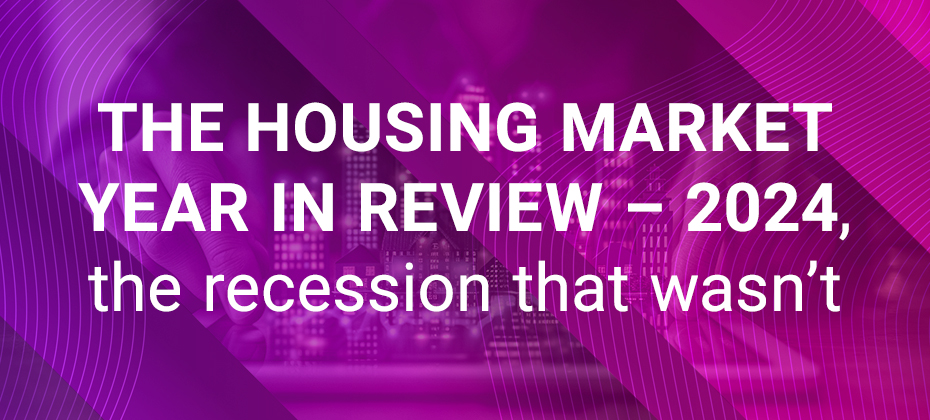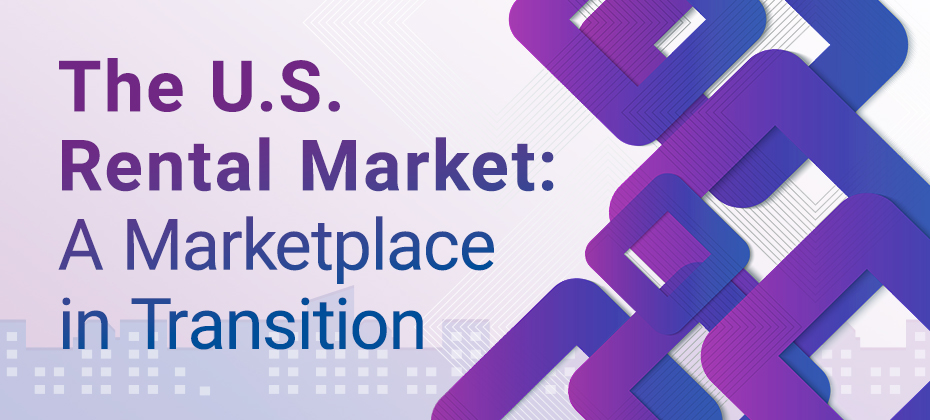Apply Mortgage Tag

Since mortgage rates have remained high even after recent Federal Reserve rate-cutting activity, there is limited rate incentive to refinance for the vast majority of borrowers. In the absence of significant rate incentive, borrower mobility and behavioral tendencies have become outsized drivers of both prepayment speeds and origination volumes. Unfortunately, traditional MBS market data does not contain adequate information for investors to analyze either borrower mobility or behavioral tendencies like sources of payoff funds (i.e., cash payoff, refinance of existing loan, opening of a new lien on a 2nd home, etc.). By using Experian's Mortgage Loan Performance (MLP) Dataset, a monthly-updated time series featuring combined loan, borrower, and property-level details covering nearly the entire US mortgage market since 2005, it's possible to examine patterns in behavior for borrowers who have prepaid their loans early, such as: The proportion of paid-off borrowers who retain the subject property (“stayers”) versus those who move (“movers”); and for both of these subsets, the percentage of people who re-enter the mortgage market with a new loan ("returners") compared to those who leave the mortgage market after paying off their loan ("leavers"). Classification as returner or leaver in the charts below is based on whether the paid-off borrower opened a new mortgage loan as of the end-of-August observation date. Sources of mortgage payoff funds — what proportion of pay-off was via refinance of the subject property vs. opening a new lien on a 2nd home or investment property? What proportion pays off in cash resultant from a sale of the subject property or cash out-of-pocket while retaining the subject property? For the set of returners, what is the typical time lapse between payoff and opening of a new mortgage, i.e., are most payoffs simultaneous or are a significant number of borrowers utilizing bridge financing, or paying off a current loan while they shop for a new home and new loan? For the set of leavers, what are the credit, income and demographic characteristics of these borrowers? Are they leaving the mortgage market because they are unable to get a new loan due to weak credit or insufficient income? Mobility and source of payoff cash dynamics are summarized below for a sample of ~ 63,000 mortgage payoff events, drawn from MLP, which occurred from February to July 2025. Amongst other trends, we see that approximately 70% of borrowers who paid off their loan exited the mortgage market (~40% retained property after a cash payoff + ~4% sold property and bought a new property in cash + ~24% sold property and didn’t purchase another property). This high proportion is probably driven in part by the relative lack of rate/term refinance and purchase activity given the current rate environment. When we look at all payoffs in MLP over the same time period — 2.3 million payoff events — the ~70% proportion of leavers holds. Within this larger sample, we also break down time to re-entry for the returners. Unsurprisingly, of the 30% returners, the vast majority open a new loan just prior to or within a month of prepayment: Since MLP contains monthly-refreshed, joined credit profile data for every mortgaged borrower, we can also examine the credit and income characteristics of leavers to determine if poor credit or limited income prohibited re-entry. This analysis reveals that leavers are generally not credit or income limited; the pool of leavers is characterized by the following average metrics: 746 current Vantage 3.0 credit score 49 years of age $99,759 current modeled income 34.8 back-end DTI The following table stratifies the leaver population by generation: Further segmentation by loan servicer, originator and borrower credit profile (e.g., dollar amount of student loan debt outstanding) and past behavior (e.g., how many mortgages has this borrower refinanced in the past?) across all tradelines are potential next steps. As the rates environment evolves, we will monitor mobility trends, the ratio of borrowers paying off loans while moving versus those staying, and how borrowers decide to finance their prepayments. In addition to rates, changes in HPI, unemployment and underwriting guidelines will influence these behaviors. By leveraging new datasets like MLP which capture not only loan performance, but also regularly refreshed credit profile, behavioral trends and property details over the entire credit lifespan of a consumer and all their tradelines, investors can incorporate a 360-degree view of loan, borrower and property into their predictive analyses.

In the latest episode of “The Chrisman Commentary” podcast, Experian's Alison Bird, Product Owner, and Joy Mina, Director, Product Commercialization, discuss how streamlining the verification process helps mortgage lenders serve more borrowers without sacrificing accuracy. Listen to the full episode for all the details and tune in to the previous episode to learn why price transparency is important in the verification process. Listen now

In the latest episode of "The Chrisman Commentary" podcast, Experian experts Ken Tromer, Director, Mortgage Market Engagement, and Ted Wentzel, Senior Product Marketing Manager, talk about why price transparency is important in the verification process, and how Experian Verify ensures it. Listen to the full episode for all the details and tune in to the previous episode to learn more about reducing mortgage pipeline fallout and improving loan pull-through rate. Listen to podcast

In 2024, the housing market defied recession fears, with mortgage and home equity growth driven by briefly lower interest rates, strong equity positions, generally positive economic indicators, and stock market appreciation. This performance is notable because, in 2023, economists’ favorite hobby was predicting a recession in 2024. Following a period of elevated inflation, driven largely by loose monetary policy, expansionary fiscal policy, and supply chain disruptions brought on by COVID, economists were certain that the US economy would shrink. However, the economy continued outperforming expectations, even as unemployment rose modestly (Figure 2) and inflation cooled (Figure 3). Source: FRED (Figure 1, Figure 2, Figure 3). So, a good economy is good for the mortgage and home equity markets, right? Generally speaking, this statement was true. As monitored by Experian’s credit database, mortgage originations increased by approximately thirty percent year over year as of November 2024 (Figure 4), and Q3 ’24 pre-tax profit for Independent Mortgage Banks (IMBs) averaged $701 per loan.1 So, business in home lending is good — certainly better than it was during the period when the Fed was raising rates, origination volumes shrank as opposed to grew, and IMB profit per loan turned negative. Source: Experian Ascend Insights Dashboard. What constituted this growth in mortgage lending? As we all know, the Fed has lowered interest rates by 100bps since they started reducing rates in September. The market had priced in the September cut weeks prior to the actual announcement (Figure 5), and the market enjoyed a spike in refinance volume as a result (Figure 6). However, in the lead-up to and following the US presidential election, interest rates spiked back up due to the market’s expectations around future economic activity, which will dampen pressure on refinance volumes even after the recent additional rate drop. The impact of further rate drops on mortgage rates is unclear, and refinance volume still constitutes only around three percent of overall origination volume. Source: Figure 5, Figure 6 (Experian Ascend Insights Dashboard). The shift to a purchase-driven housing market What does this all mean? Our view is that pockets of refinance volume (rate and term, VA, FHA, cashout) are available to those lenders with a sophisticated targeting strategy. However, the data also very clearly indicates that this market is still very much a purchase market in terms of opportunity for originations growth. This position should not surprise long-time mortgage lenders, given that purchase volume has always constituted a significant majority of origination volume. However, this market is a different purchase market than lenders may be used to. This purchase market is different because of unprecedented statistics about the housing market itself. The average age of a first-time homebuyer recently reached a record high of 38. The average age of overall homebuyers in November of this year similarly jumped to a new record high of 56, with homes being “wildly unaffordable for young people.” Twenty-six percent of home purchases are all-cash, another record high, and homeowners have an aggregate net equity position of $17.6 trillion, fueling those all-cash purchases. The market is expensive both from an interest rate perspective and a housing price-level perspective, and those trends are driving who is buying homes and how they are buying them.2 Opportunities for lenders in 2025 What do these housing market dynamics mean for lenders? To begin with, lenders should not spend money marketing mortgages to consumers in their 50s and 60s with large equity positions. These consumers are likely to be in the 26 percent all-cash buyer cohort, and that money will be wasted since mortgages are no longer so cheap that even cash-rich buyers would take them. Further, this equity-rich generation has children, and nearly 40% of those children borrow from the bank of mom and dad to purchase their first home. Since roughly a quarter (albeit a shrinking quarter) of homebuyers are first-time homebuyers, and since 40% of those rely on help from parents to facilitate that purchase, it may make sense for lenders to identify those consumers with 1) children and 2) significant equity positions and to offer products like cash-out refinances or home equity loans/lines to help facilitate those first-time purchases. Data is critical to executing these kinds of novel marketing strategies. It is one thing to develop these marketing and growth strategies in principle and another entirely to efficiently find the consumers that meet the criteria and give them a compelling offer. Consider home equity originations. As Figure 7 illustrates, HELOC originations are strong but have completely stalled from a growth rate perspective. As Figure 8 illustrates, this is despite the market's continued growth in direct mail marketing investment. Although HELOC origination volumes are a fraction of mortgage—around $27b per month for HELOC versus $182b per month for mortgage—there are significantly more home equity direct mail offers being sent per month (39 million) for home equity products as there are for mortgage (31 million) as of October ’24.3 This all means that although many lenders have wised up to the home equity opportunity to the point of saturating the market with offers, few have successfully leveraged targeting data and analytics to craft sufficiently compelling offers to those consumers to convert those marketing leads into booked loans. Source: Figure 7 (Experian Ascend Insights Dashboard), Figure 8 (Mintel). Adapting to a resilient housing market In summary, the housing market, comprised of mortgage and home equity products, has experienced persistent growth over the past year. Many who are reading this note will have benefitted from that growth. However, as we have identified, in many respects housing market growth has 1) been concentrated to some key borrower demographics and 2) many lenders are investing in marketing campaigns that are not efficiently reaching or convincing that key housing demographic to book loans, whether it be a home equity or mortgage product. As such, as we move into 2025, Experian advises our clients to focus on the following three themes to ensure they benefit from this trend of growth into the new year: Ensure you effectively differentiate your marketing targeting, collateral, and offers for the various demographics in the market. Ensure your origination experiences for mortgage and home equity products are modern and efficient. Lenders who force all borrowers through a painful, manual legacy process will waste marketing dollars and experience pipeline fallout. Although the market is growing, other lenders are coming for your current customers. They could be coming for purchase activity, refinance opportunities, or they may be using home equity products to encroach on your existing mortgage relationship. As such, capitalizing on growth in 2025 is not merely about gaining new customers; it is also about retaining your existing book of business using high-quality data and analytics. Learn more 1 Although December numbers are available for year-over-year comparison, we excluded them due to the holiday period's strong seasonality patterns. 2 The Case-Shiller index recently topped out at record levels. 3 Mintel/Comperemedia data.

Transformations in today’s U.S. rental market reflect changing economic and market forces. These dynamic times present challenges and opportunities for property managers and landlords seeking more stability and consistency in their property occupancies. The real estate industry responded positively to the Federal Reserve's recent announcement to cut interest rates by a quarter percentage point, marking a favorable shift from previous actions that kept rates steady. However, uncertainty lingers about the extent and pace of changes in the residential real estate market, including the rental and buying sectors. Experts remain optimistic, predicting improvements as the market heads into next year's busy season. Landlords and property managers looking to attract more stable renters need to understand macro- and micro-market trends, renter demographics and preferences, and other information impacting their specific locales. Experian Housing published its 2024 report on the U.S. rental market, which provides data-driven insights into the current rental landscape. Experts examined today’s renter population, current market trends, the state of housing development, and the market’s future. Who is today’s renter? Today’s renter is still navigating financial constraints and potential marketplace affordability challenges. While location-specific information does influence the affordability of renting versus buying a home, on average, affordability remains an important factor guiding consumer decision-making. Our latest rental report highlights a notable shift in the rental market, with a growing number of younger renters and a decline in the average annual income among renters. According to Experian’s RentBureau®1, over 30% of renters are Generation Z—the youngest adult demographic. Expanding this to include individuals under 34 years old, younger renters now represent over half of all renters in the United States. Experian’s research highlights a shift in rental spending trends, showing the average income for renters now at $52,600. RentBureau data underscores the evolving financial landscape, with rent-to-income (RTI) ratios reflecting a growing commitment to housing. On average, individuals allocate 44.1% of their income to rent, while low-to-moderate-income households dedicate 52.5%. These figures exceed the traditional guideline of keeping rent within 30% of gross monthly income, underscoring the significant economic pressures faced by renters, particularly those with low-to-moderate incomes, as they navigate rising housing costs and limited affordability in the current market. This reality highlights the urgent need for broader systemic solutions to address housing availability and affordability challenges. What is happening in the rental market? Rental market trends reflect several factors, including changes in renter demographics, interest rates, housing supply and demand, and the economy. Overall, vacancy rates have stayed relatively low, which has resulted in rising rent prices, although there are signs of flattening. With fewer housing options available, many renters stay put for longer, which also contributes to availability and affordability. More renters, over 50% of all renters (a 10% increase over May 2023), are paying $1,500 or more in monthly rent, and the nationwide average rent stands at $1,713. A regional look offers greater specific insights for landlords and property managers, which is critical for truly understanding the marketplace. In 2024, 43 of 50 states have RTI ratios above the suggested guideline of 30%. California has the highest median RTI at just over 46%, followed by Massachusetts, Florida, Washington, and New Jersey. Other states facing increasing RTI ratios include Georgia, North Carolina, Colorado, Texas, and Nevada. These high ratios negatively affect affordability. At the same time, Experian Housing research indicates that over 92% of renters hold a single lease over two years. Data also shows 6.7% of renters with two leases in 24 months and others moving three or more times in this timeframe. Older generations, surprisingly, are moving more now than in recent years. Where is development headed? High mortgage rates are constraining housing development, especially for affordable entry-level homes. Roughly 50% fewer starter homes are being built, and multifamily new construction also faces constraints. With that said, multi-family housing units already under construction are coming to market. These units are generally high-end, contributing to increased rental prices. The supply coming to the market is higher-priced due to greater construction costs across the board. Contributors to the rising costs include builds in pricier metropolitan areas as well as features and modern amenities sought after by younger renters. The U.S. Census Bureau reports a slight uptick in new home construction since July 2023. How is the future looking? The U.S. economy is expected to remain stable, which should benefit renters and landlords alike. The outlook for the rental market in 2024 and 2025 remains optimistic with inflation down and the Fed rate cut, but many other factors come into play, specifically, overall economic health and the state of the employment market. For renters, the best tact is to set goals to improve their overall credit profiles and opportunities in the housing market. Individuals benefit from rent reporting. Experian RentBureau helps renters build credit profiles and open the best opportunities for the rental market and moving to the first-time homebuyer market. With rental housing still in high demand, property managers and landlords should focus on tenant screening, rent reporting, and fraud prevention as part of their risk management strategies. Focusing on these areas will increase the chances of finding quality, longer-term tenants. To learn more about the state of the U.S. rental market, download Experian Housing’s 2024 rental report. Access report 1 RentBureau® is the largest rental payment database that contains more than 36 million renter profiles. While RentBureau doesn’t represent the total U.S. rental market population, internal studies reveal RentBureau data aligns closely to historical U.S. Census data studies, which provides confidence in the deeper understandings aggregated in the report.